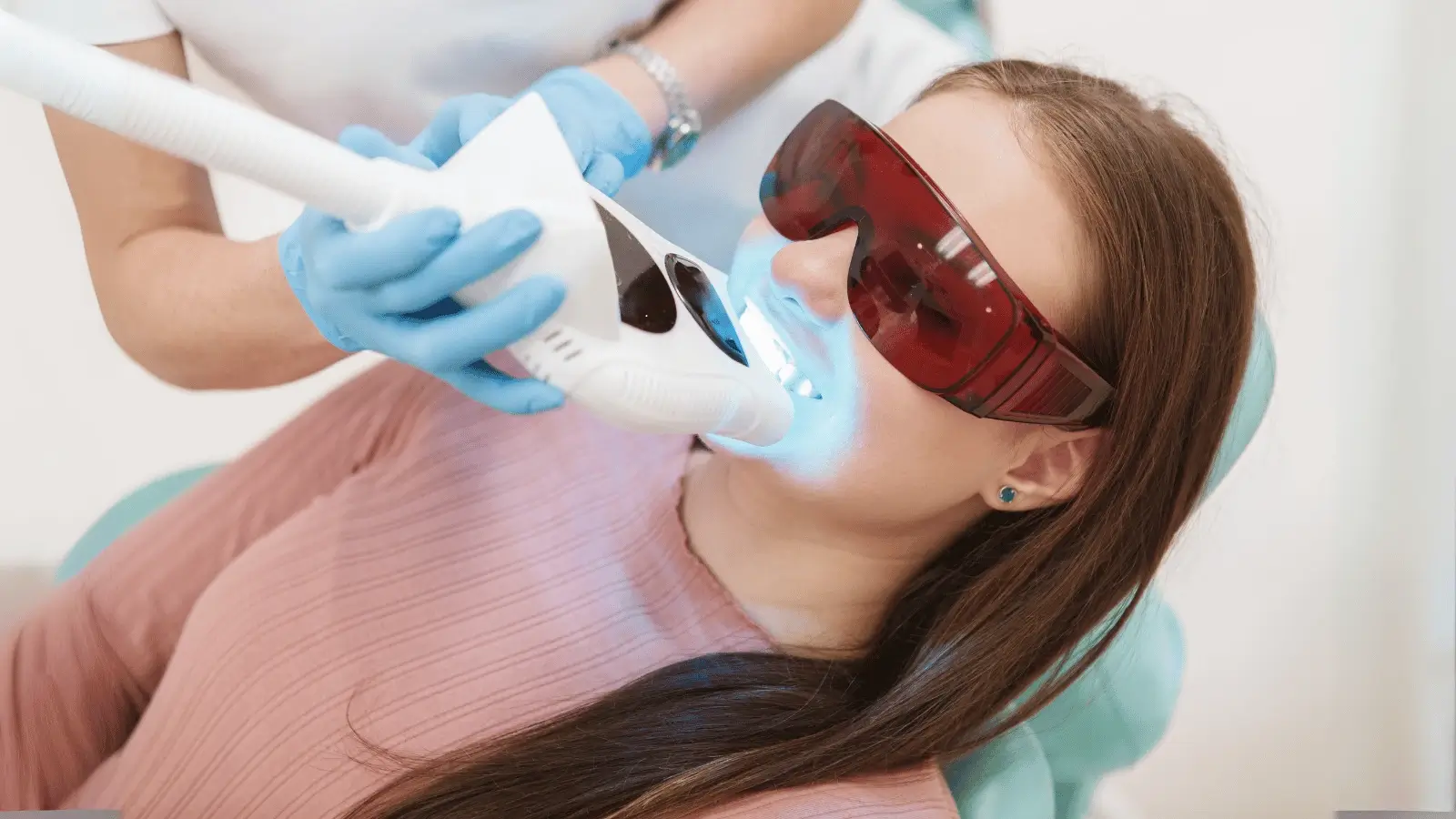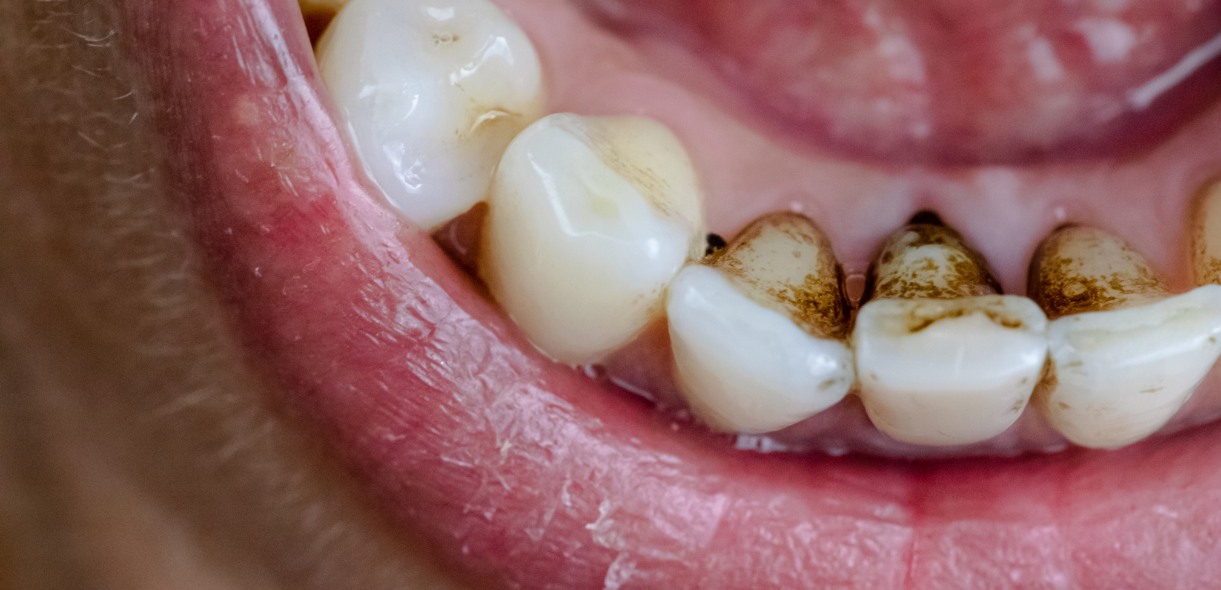
Smoking has a well-known impact on overall health, but its effect on teeth is particularly striking. Studies show that smokers are twice as likely to develop yellow and stained teeth compared to non-smokers. This can be frustrating for those trying to maintain a bright smile. Smoking adds a unique set of challenges for anyone interested in teeth whitening, making it harder to achieve and maintain desired results.
This blog will explore how smoking affects teeth-whitening outcomes and why it’s a common concern for smokers. If you smoke and want a brighter smile, understanding these effects can help you make informed decisions about your teeth whitening options. It will cover how smoking impacts teeth color, what whitening methods work best, and tips to preserve whitening results even as a smoker.
Understanding How Smoking Impacts Teeth Color
Tobacco Stains on Teeth: Smoking introduces tar and nicotine into the mouth, which results in deep stains on the teeth. Tar leaves dark brown or yellow marks that attach to the enamel and resist regular brushing. Even nicotine, which is colorless, turns yellow when exposed to oxygen, adding to the discoloration.
Long-Term Effects on Enamel and Oral Health: Over time, smoking wears down enamel, the protective outer layer of teeth. Enamel erosion makes teeth more vulnerable to staining and further damage.
Smoking also leads to plaque and tartar buildup, contributing to gum disease and tooth decay. These oral health issues not only harm your smile but also make it harder for teeth whitening treatments to work effectively.
Additional Factors That Worsen Staining: Smokers often drink coffee, tea, or red wine, which worsens staining. These drinks contain pigments that can cling to teeth, especially when combined with tobacco’s effects. Without diligent care, these factors cause persistent discoloration, making it challenging to keep a bright smile.
How Does Smoking Interfere with Teeth Whitening Results?
Reduced Whitening Effectiveness:
Tobacco stains penetrate deeply into the enamel, making them more challenging to remove. Whitening treatments designed for common stains (from food or drink) often don’t achieve the same level of brightness on a smoker’s teeth. As a result, smokers may need more intensive whitening or repeated treatments to see results.
Potential for Faster Relapse:
Even after a successful whitening treatment, smoking quickly re-stains the teeth. Nicotine and tar can cling to teeth immediately, diminishing whitening results in a short time. A non-smoker may enjoy results that last several months, while a smoker could see new stains in a matter of weeks.
Increased Sensitivity Risk:
Smoking weakens the enamel, often making teeth more sensitive. Whitening agents (like hydrogen peroxide) can aggravate this sensitivity, making the process uncomfortable for some smokers. For those with gum inflammation due to smoking, teeth whitening can also cause more irritation, affecting the whitening experience and results.
Types of Whitening Treatments and Their Suitability for Smokers
Professional In-Office Whitening:
Professional whitening treatments in a dentist’s office are typically the most effective for smokers. Dentists use stronger whitening agents and advanced technology that can penetrate deep stains left by tobacco. This method may be the best option for smokers who want immediate and noticeable results.
In-office whitening can more effectively remove years of staining than at-home treatments, though touch-ups may be required if smoking continues.
At-Home Whitening Kits:
At-home kits are convenient and can be useful for maintaining professional results. However, their whitening strength is usually lower, so they may not be as effective against deep tobacco stains. For smokers, at-home kits may help with maintenance but might not provide dramatic results.
Combining these kits with whitening toothpaste may help keep new stains at bay, although smokers will likely need professional whitening for a full impact.
Natural or Alternative Methods:
Some people turn to natural methods, like baking soda or charcoal, to whiten teeth. These can offer mild whitening effects and can help with surface stains, but they may not work well for deep tobacco stains.
Smokers who prefer natural options should understand that these methods often don’t deliver the same brightening power as professional treatments and may only serve as a supplementary option.
Practical Tips for Smokers to Improve Whitening Results
Immediate Steps to Reduce Staining:
Rinse your mouth with water after smoking to help reduce immediate staining effects. Using a straw when drinking stain-causing beverages like coffee or tea can also help. This minimizes contact between the liquid and your teeth, keeping stains at bay.
Oral Hygiene Best Practices:
Strong oral hygiene is essential for smokers. Brush your teeth twice a day using a whitening toothpaste, and consider using an electric toothbrush, which may remove stains more effectively. Regular flossing helps remove plaque buildup, and mouthwash can freshen your breath while fighting bacteria.
Frequent Whitening Maintenance:
Smokers often benefit from regular whitening touch-ups. Periodic whitening sessions and frequent dental cleanings help maintain the results and prevent significant discoloration. Consider scheduling dental cleanings every three to six months to remove plaque and surface stains and extend the life of whitening results.
Potential Health and Cosmetic Benefits of Reducing or Quitting Smoking
Impact on Whitening Durability:
Reducing or quitting smoking can significantly extend the life of your whitening results. Without constant nicotine and tar exposure, your teeth stay brighter longer, making professional whitening sessions less frequent and more cost-effective.
General Oral Health Improvements:
Quitting smoking improves overall oral health. Reduced gum inflammation lowers the risk of gum disease, tooth decay, and other oral health problems. Healthier gums and teeth also create a better foundation for any whitening efforts, giving your smile a healthier look.
Aesthetics Beyond Teeth Whitening:
Beyond whiter teeth, reducing or quitting smoking brings other aesthetic benefits. Smokers often struggle with bad breath, which improves once smoking stops. Your gums may become a healthier color, and quitting smoking can improve skin tone and reduce wrinkles around the mouth, adding to an overall healthier appearance.
Smoking and teeth whitening don’t go hand in hand, but smokers can still work toward a whiter smile with the right approach. Smoking causes deep-set stains that can make whitening more challenging, but proper maintenance and professional treatments can still deliver results. Quitting or reducing smoking not only extends the longevity of whitening but also brings broader health benefits.
For the best whitening results, consult our dentists. They can provide guidance tailored to your needs and help you make informed choices about whitening methods that work best for smokers.


